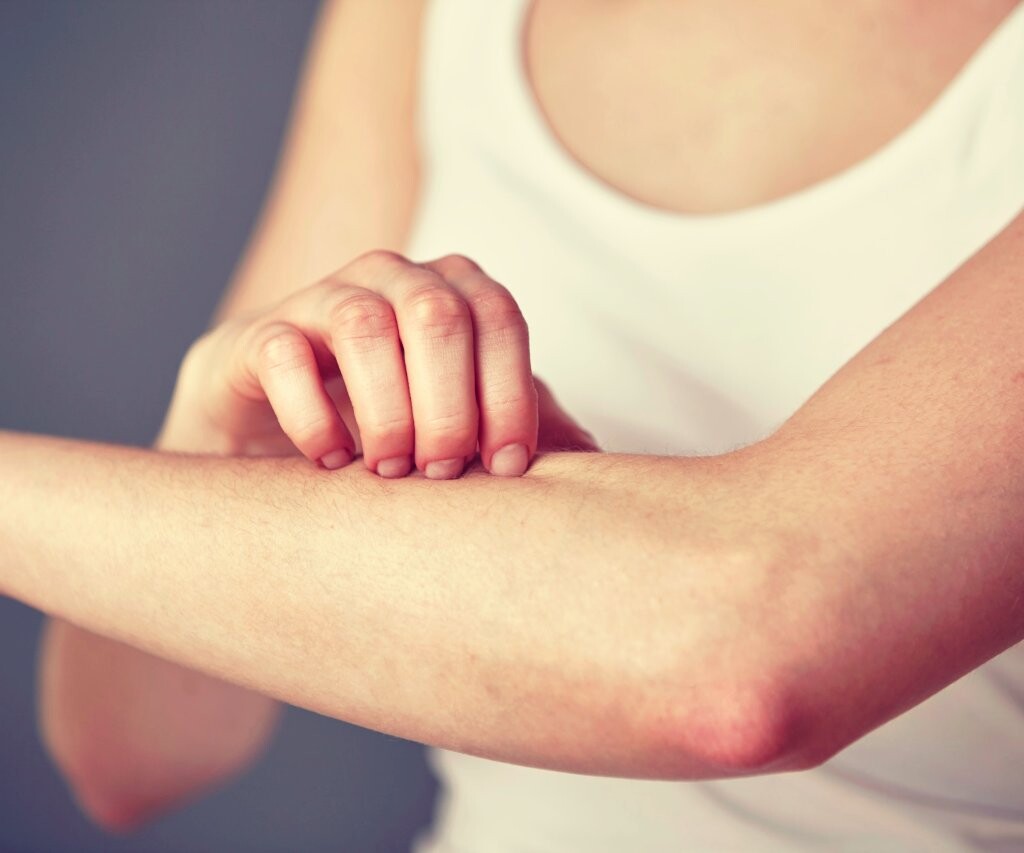Psoriasis
Overproduction of superficial skin cells, resulting in itching, accumulation of dead cells, thickened and reddened skin with silvery scales and scaling, are the characteristics of psoriasis.
It can appear anywhere on the body, but is most common on the elbows, back, shoulders, knees, scalp, sacrum, face, palms of the hands and soles of the feet. It may also take the form of huge plaques or drops.
Biological conflict of psoriasis
Conflict of separation in the vital experience, as in the other epidermal disorders, but with a particularity which is that of living simultaneously two programs of rupture of contacts, one active and the other in repair.
This makes us think that the afflicted are typically hypersensitive to the idea of being away from what is desired, dreaming of reunions, feeling a strong disintegration of others and having a tremendous longing for love and affection without feeling that they have received it.
Psoriasis creates a visual rejection in those who notice it, just like other skin diseases and the individual suffering from psoriasis feels isolated by those looks.
On the other hand, it can be argued that it is a charming way for the body to safeguard itself from its fragility while experiencing rejection and avoid feeling the excessive physical approach. Freeing itself from ingrained thought patterns and attitudes that are no longer necessary.
“I want to feel close to some people, but when I do, I am far away from others.”
Urticaria
An allergic reaction that releases chemicals in the body and causes inflammation in the skin to develop itchy, itchy welts can result in urticaria.
Skin lesions that develop from edema and vaso-dilatation of the superficial dermis that is visible in the epidermis are its defining characteristics.
Biological conflict of urticaria
Threat or aggression to separation and integrity in biological conflict (not wanting contact or wanting to separate). One can speak of one battle or the other, depending on its affectation:
Epidermal affectation: a record of an experience of separation or forced contact. Dermal involvement: a response to an altercation that is perceived as aggression. How does it affect you emotionally?
To find the cause and find a solution, always examine the history of the conflict (separation and aggression) that included the allergic component (dermis and/or epidermis).
Rosacea
Rosacea is a disorder in which the blood vessels enlarge during the healing process, resulting in facial redness.
Redness in the central part of the face (cheeks, nose, or forehead) is where it usually begins, but it can also occasionally spread to the neck and chest. As rosacea worsens, other symptoms such as eye redness, burning, stinging and itching also appear.
Biological conflict of rosacea
Conflict is due to hostility, attack, or feeling of ugliness together with devaluation. Faced with aggression against which he/she cannot defend him/herself, the person feels useless.
According to estimates, 10% of the world’s population, mostly fair-skinned people of northwestern European descent, suffer from rosacea. It is known as “the curse of the Celts” throughout Great Britain and Ireland…

